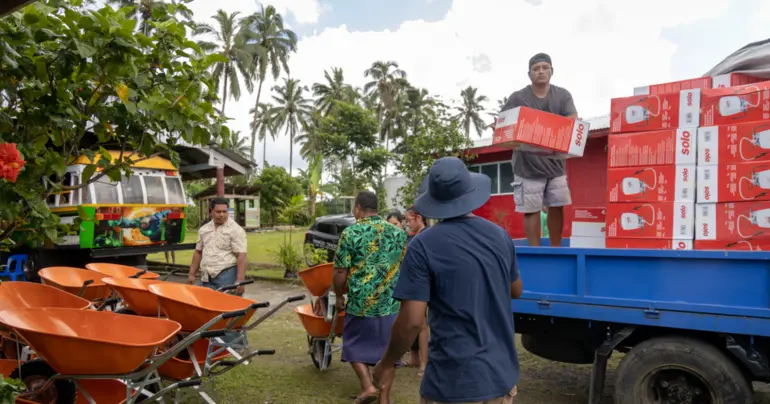Endangered, not extinct - Still time to save species in our legends and myths
After years of searching, the Manumea, Samoa’s critically endangered national bird, was sighted in the Uafato forest. It is reassuring to know that multiple confirmed observations have been made over the past three weeks.
The Manumea, or the tooth-billed pigeon, is endemic to Samoa, which means that it can only be found in Samoa. It is the national bird of Samoa, yet many Samoans have not seen what a Manumea looks like in real life. It is listed as critically endangered. It is said to be a combination of things that has led us to this, and it also includes human behaviour.
The most recent sighting occurred on Friday, 7 November, along the bird hide valley, which is the same area where most previous sightings have been recorded. The Manumea was seen either in flight or moving in and out of the upper canopy, likely searching for food. The isolation of Uafato’s rainforest valleys has helped protect the area from severe cyclone damage, making it an important habitat for the bird.
We can now safely say that the Manumea is not extinct, and there is hope that a concerted effort could help increase the bird numbers. With the threat to our endemic species real and staring us in the face, what should we do as a nation to avoid the catastrophe of the total loss of endemic flora and fauna?
More proactive sustainable development practices at the national level, which don’t lead to habitat loss, are a good start in safeguarding endemic flora and fauna for future generations in Oceania, including Samoa, where species and ecosystems continue to face this threat daily.
The need for the government to identify more conservation sites in partnership with local communities, especially in areas that are biodiversity hotspots, will also go a long way in protecting and addressing the threat of species extinction.
As a people who've relied upon nature for thousands of years, to make us who we are today as a distinct cultural group in this ocean of majestic islands, it would be wrong for us to turn our backs on the natural world, with human actions exacerbating the threats it has come under over the last 260 years since the industrial revolution.
The Manumea is not the only species under threat. The flying foxes and turtles are constantly being killed. These animals are also on the endangered list. Earlier this year, the slaughter of green and hawksbill turtles in Manono was highlighted. The slaughter was disguised as a traditional practice. We cannot keep doing this.
The turtles that were slaughtered were mostly hawksbill turtles. Three species of sea turtles are found in Samoa; only one is known to nest on Samoan beaches. It is the critically endangered hawksbill turtle (Eretmochelys imbricata), which is also known as "laumei faiuga" in Samoa. The nesting season extends from November to June each year, with the peak season for turtle nesting activities within January and February.
It is critically endangered if you still have not recognised the keywords to describe this species. The World Wildlife Fund describes critically endangered species as species considered to be facing an extremely high risk of extinction in the wild. In layman’s terms, if we continue down this path, in the next century or so, turtles will only be seen in pictures and talked about in stories.
Not only has nature sustained Samoans for 3,000 years it has provided the material for our legends, our language, our proverbs, our songs, the motifs on our pe’a and malu, as well as the food, medicines, handicrafts and building material that have together created such a rich culture and society.
As the British broadcaster and world-renowned conservationist, Sir David Attenborough, said: “The truth is: the natural world is changing. And we are totally dependent on that world. It provides our food, water and air. It is the most precious thing we have, and we need to defend it.”











